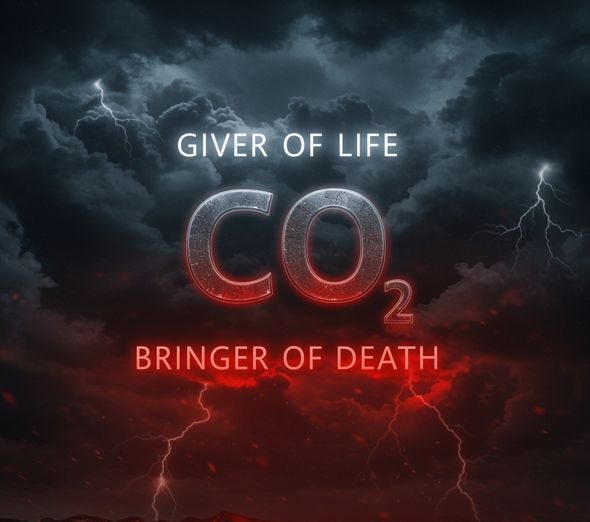Depletion and Pollution: Two Sides of the Same Coin
CO2, microplastics, and other forms of pollution discussed this week at the World Resource Forum.
A “Mind Sized” world model (Bardi and Lavacchi 2009) which illustrates the evolution of an economy based on non-renewable resources. The model is qualitative and it is not meant to generate predictions. But it agrees with other studies, such as “The Limits to Growth” and it shows how, with the progress of depletion, the economic growth grinds to a halt and the economy starts declining. Then population also stops its growth and declines. Pollution is a strong factor in causing the decline. Note how it starts doing damage when the system is already in trouble and declining, making it more difficult to act to mitigate the damage. “Pollution” takes many forms, but it may well be the growth of atmospheric CO2 that generates the most dangerous problems.
On Sep 2,2025, the Club of Rome is organizing a presentation at the World Resource Forum titled: “The Other Side of Depletion,” where we examine the correlation of depletion and pollution on the basis of System Dynamics
Tuesday, September 2nd
The Other Side of Depletion
11:00 AM – 12:00 PM
Plenary B
Description
Organized by the Club of Rome.
Much interest in the area of resources is dedicated to depletion and sometimes it neglects “the other side of the depletion,” that is the effects of pollution. The Club of Rome analysis of the trajectory of economic systems has always been based on an approach based on system dynamics. That is, taking into account all the factors involved in the system. This approach has been pioneered in the first report to the Club of Rome, the well-known “Limits to Growth,” published in 1972. The results of that study showed how depletion and pollution reinforce each other in drawing down the capital resources that allow the system to function. The combination of the two generates the so-called “Seneca Effect” that involves a productive decline much more rapid than growth.
In this session, the speakers selected by the Club of Rome highlight some new elements correlated to pollution. After an introduction by Carlos Alvarez Pereira, some recent results on the biochemical pollution caused by carbon dioxide will be presented by Ugo Bardi. Jane Muncke will report about the current situation relative to plastic pollution, a negative effect generated by increasing plastic pollution. Finally, Kuo-Wei Huang will describe some negative effects of the attempts of decarbonizing the energy production system.
The linking thread of these presentations is how actions that are often presented as “solutions” to pressing problems of climate and energy need to be considered from a dynamic viewpoint which may show that they present more problem than they can solve.
Speakers
Ugo Bardi, Club of Rome, Member of the executive committee
Jane Muncke, Food Packaging Forum, Managing Director and Chief Scientific Officer
Kuo-Wei Huang, King Abdullah University of Science and Technology, Professor of Chemistry
Moderator
Carlos Alvarez Pereira, The Club of Rome, Secretary General
From “Living Earth”
The Great CO2 Experiment. Will we Survive it?
CO2 regulates the metabolism of the Earth’s ecosystem in many ways. Too much of it, just as too little, can kill. And, right now, we are pushing the CO2 concentration beyond values that were never experienced by the biosphere during the past 15 million years. It is a vital subject for our survival.
So far, the increase in CO2 concentrations in the atmosphere has been considered a problem only in terms of its greenhouse effect, a cause of global warming. But CO2 is not just a greenhouse gas. It is a chemically active molecule that plays several crucial roles in the metabolism of living beings. Carbon dioxide is at the same time food and waste; it is a catalyst, it is a regulator, it changes the blood’s pH, affects the calcification of bones, blood circulation and much more.
The CO2 chemical perturbation is known in sectors such as ocean acidification, and “global greening.” Much less is known about the metabolic effects of CO2 on humans and other mammals. So, a group of researchers, Ugo Bardi, Phil Bierwirth, Kuo-Wei Huang and John McIntyre decided to plunge into the matter and create a comprehensive review on the subject. Our paper on CO2 was published recently in Environmental Science Advances, a journal of the Royal Society of Chemistry. https://lnkd.in/dUKUTPrJ
We found that the current concentration of 425 ppm is not far from levels that can negatively affect people’s health, and we breathe much larger concentrations indoors. In addition, we keep increasing it by about 3 ppm every year. What are we doing?
A body of knowledge has accumulated on this subject and the conclusion is clear: negative effects on human mental abilities are seen already at CO2 concentrations commonly experienced indoors today. Nobody was ever exposed to these concentrations for their whole life, but future generations of humans will be. It is a gigantic experiment carried out on our bodies. Hardly anything qualifies better in terms of “playing with fire” than this reckless attitude.





It’s very interesting if microplastics could collapse populations via hormone disruption
Amphibians have had massive populations damage as their life cycle so impacted by chemical disruption
Insect populations collapsed also
Humans next?
The big unknown is how social cohesion across nations and the world will hold up while experiencing mass mortality due to malnutrition and opportunistic diseases. Ugo, your book Extinctions was so thoughtfully researched and presented, you would be the best person I know if to write a book on how societies contracted yet held together during the waves of Black Plague which killed 30 to 60% of the population. Are you looking for another project to write from a collapse perspective?